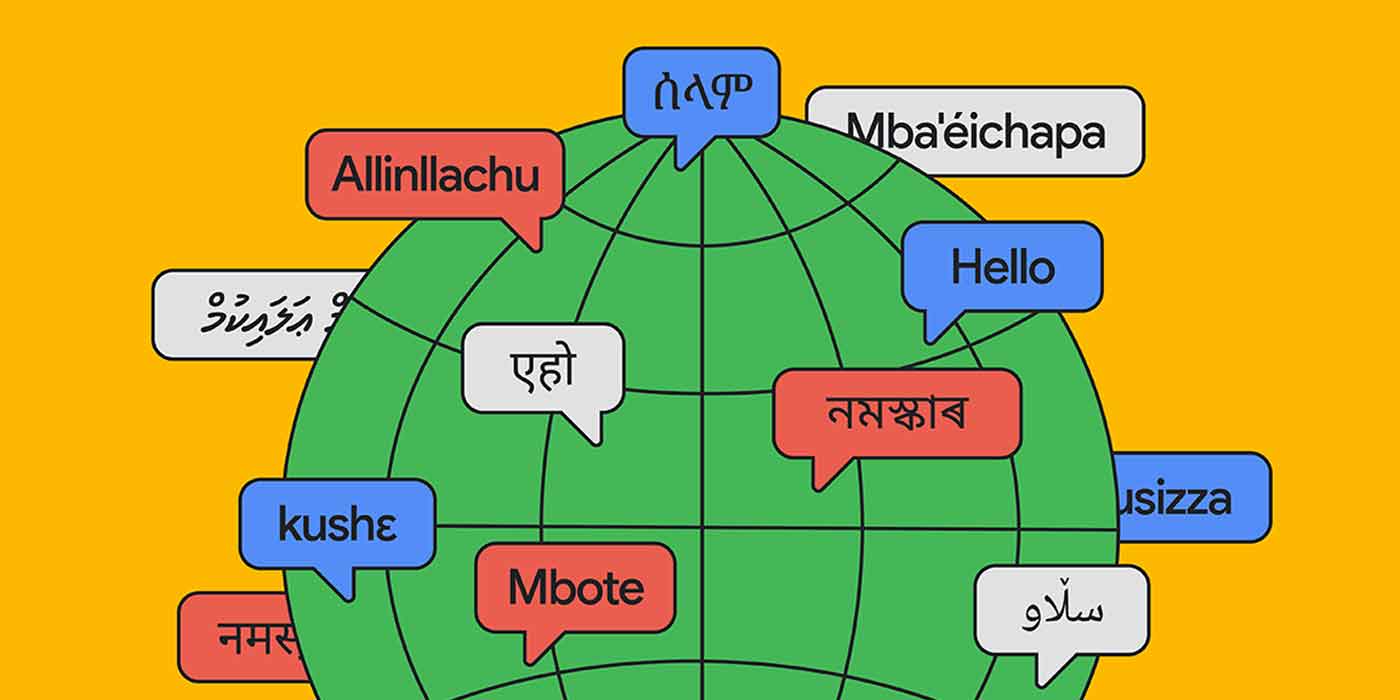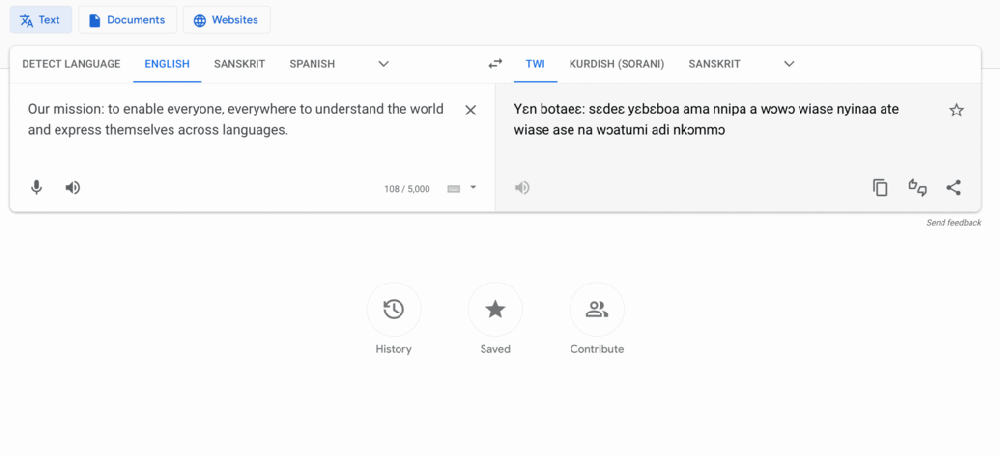
Google Translate has today confirmed support for a further 24 new languages and dialects on its online translation service.
From May 11, you’ll be able to use Google Translate to convert a range of new languages into your local dialect, helping those in regions such as Bolivia, Chile, India, Kenya, Ethiopia, Sierra Leone, and many more to access direct translations. The addition of new languages and regional dialects will mean that a further 300 million people around the globe, including many indigenous communities, can access one of Google’s most powerful free tools.
Here’s the complete list of new languages now supported by Google Translate:
- Assamese – used by about 25 million people in Northeast India
- Aymara – used by about 2 million people in Bolivia, Chile, and Peru
- Bambara – used by about 14 million people in Mali
- Bhojpuri – used by about 50 million people in northern India, Nepal, and Fiji
- Dhivehi – used by about 300,000 people in the Maldives
- Dogri – used by about 3 million people in northern India
- Ewe – used by about 7 million people in Ghana and Togo
- Guarani – used by about 7 million people in Paraguay and Bolivia, Argentina, and Brazil
- Ilocano – used by about 10 million people in northern Philippines
- Konkani – used by about 2 million people in Central India
- Krio – used by about 4 million people in Sierra Leone
- Kurdish (Sorani) – used by about 8 million people, mostly in Iraq
- Lingala – used by about 45 million people in the Democratic Republic of the Congo, Republic of the Congo, Central African Republic, Angola, and the Republic of South Sudan
- Luganda – used by about 20 million people in Uganda and Rwanda
- Maithili – used by about 34 million people in northern India
- Meiteilon (Manipuri) – used by about 2 million people in Northeast India
- Mizo – used by about 830,000 people in Northeast India
- Oromo – used by about 37 million people in Ethiopia and Kenya
- Quechua – used by about 10 million people in Peru, Bolivia, Ecuador, and surrounding countries
- Sanskrit – used by about 20,000 people in India
- Sorani Kurdish – used by about 14 million people in South Africa
- Tigrinya – used by about 8 million people in Eritrea and Ethiopia
- Tsonga – used by about 7 million people in Eswatini, Mozambique, South Africa, and Zimbabwe
- Twi – used by about 11 million people in Ghana
Google also states that this is a technical milestone for Google Translate as these 24 new languages are the first that have been added using Zero-Shot Machine Translation. Detailed in an in-depth Google AI blog post, this machine learning model is capable of translating one language to another without ever requiring access or seeing the other language.

However, this isn’t a perfect solution, and Google will continue to tune and improve the accuracy of contextual translation akin to German and Spain. With that in mind, Google is continuing to seek future language support and evaluation of Translate usinsg the Translate Contribute tool.
More on Google Translate:
- Google Translate can now save search history to your account
- Google Translate for Android rolls out two versatile Material You widgets [U]
- Google Translate can now auto switch Gboard to the appropriate language
FTC: We use income earning auto affiliate links. More.


Comments